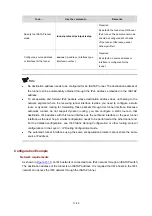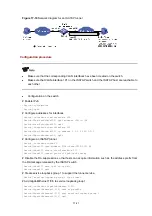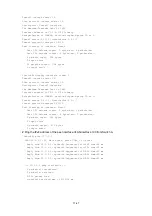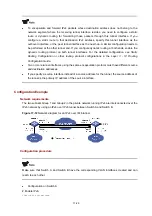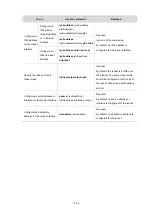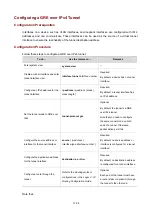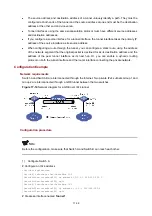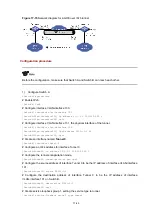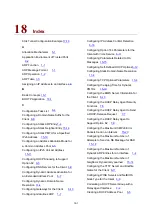
17-34
z
To encapsulate and forward IPv6 packets whose destination address does not belong to the
network segment where the receiving tunnel interface resides, you need to configure a static
route or dynamic routing for forwarding those packets through this tunnel interface. If you
configure a static route to that destination IPv6 address, specify this tunnel interface as the
outbound interface, or the peer tunnel interface as the next hop. A similar configuration needs to
be performed at the other tunnel end. If you configure dynamic routing at both ends, enable the
dynamic routing protocol on both tunnel interfaces. For the detailed configuration,
see
Static
Routing Configuration
or
other routing protocol configurations in the Layer 3 - IP Routing
Configuration Guide
z
The IPv6 address and the destination address of a tunnel interface must not be in the same
network segment.
z
The destination address of a route with the tunnel interface as the egress interface and the
destination address of the tunnel interface must not be in the same network segment.
z
Two or more tunnel interfaces using the same encapsulation protocol must have different source
and destination addresses.
z
If you specify a source interface instead of a source address for the tunnel, the source address of
the tunnel is the primary IP address of the source interface.
z
Only the IPv6 over IPv6 tunnel has a maximum number of nested encapsulations for a packet.
Configuration Example
Network requirements
The two subnets Group 1 and Group 2 running IPv6 are interconnected by using an IPv6 over IPv6
tunnel between Switch A and Switch B.
Figure 17-13
Network diagram for an IPv6 over IPv6 tunnel
Configuration procedure

